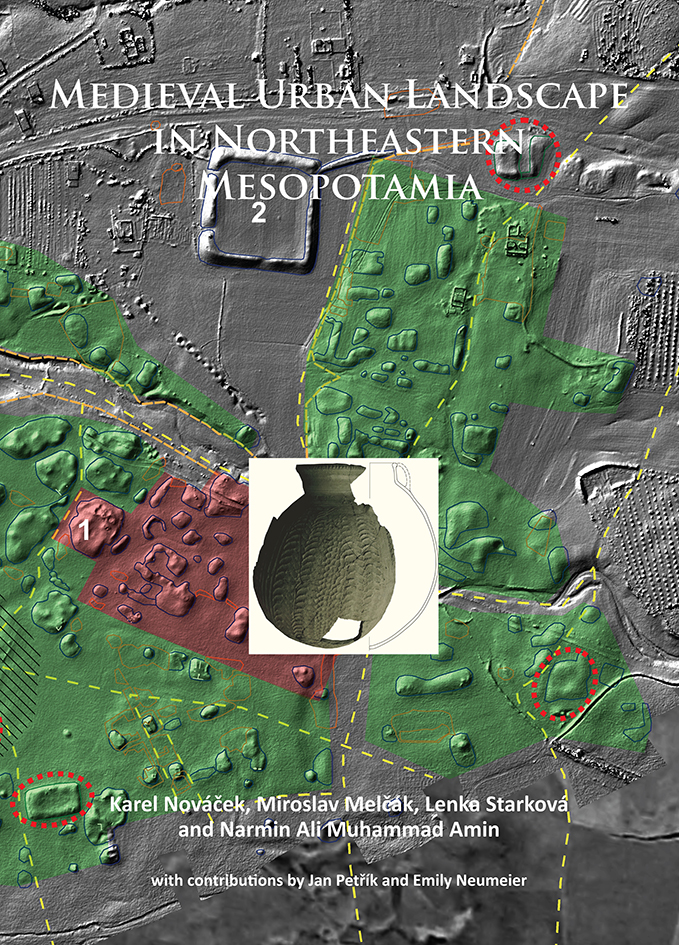Medieval Urban Landscape in Northeastern Mesopotamia
- Anno: 2016
- Autore/i: Karel Novàcek, Miroslav Melcàk, Lenka Starkovà and Narmin Ali Muhammad Amin with contributions by Jan Petrík and Emily Neumeier
- Catalogo: Archaeopress
- Argomento: Archeologia
- ISBN: 9781784915186
- ISSN:
More than fifteen sites of either confirmed or conjectured urban status existed between the 6th and 19th centuries in the particular region of northeastern Mesopotamia, bounded by the rivers Great Z?b, Little Z?b and Tigris. This present study concentrates on the investigation of this urban network. The archaeological substance of the deserted sites is mostly very well preserved in the relief of the arid steppe environment and can be excellently identified in satellite images of several types. The archaeological investigation of these settlements, augmented by a revised historical topography, offers a unique opportunity for the holistic study of the diversity, temporal dynamics and mutual relationships within the urban network that developed in the hinterland of Baghdad and Samarra, the two largest super-centres of the Old World.
This collective monograph puts together archaeological and historical data available for the individual sites, including analyses of pottery obtained by surface survey. The materially rich final report of the three-year project is supplemented by an interpretative chapter that focuses on detailed topographical comparisons of the sites, their landscape contexts, and the dynamics of the urban system within the framework of studies on Near-Eastern Islamic-period cities.
About the authors: Karel Nová?ek is associate professor of medieval archaeology in the Department of History, Palacky University Olomouc, combining in his research backgrounds in archaeology and history of architecture. Last eleven years, his field work is focussed on landscape archaeology and built environment of the Islamic period in Northern Mesopotamia
Miroslav Mel?ák is a research fellow at the Oriental Institute of the Czech Academy of Sciences, Prague. He studied Arabic language and Islamic Studies at Charles University in Prague, where he obtained his PhD in 2009. His main research interests include charitable foundations (awqaf) in Syria and Egypt and Islamic urbanism of Northern Mesopotami
Lenka Starková received her PhD from the University of West Bohemia Plze?, Department of Archaeology, where she presently works as assistant professor of the landscape archaeology. She is specialized in remote sensing, analysis of satellite imagery, airborne laser scanning and GIS
Narmin Ali Muhammad Amin is professor of archaeology at University of Salahaddin, Erbil, Iraqi Kurdistan, and also a research fellow in CRNS Paris (UMR 8167 – Orient et Méditerranée). Her main area of research is the Islamic period and Eastern Christian monasteries in Iraqi Kurdistan
Jan Pet?ík graduated in 2011 from the interfaculty double-major programme combining geology with archaeology at the Masaryk University in Brno. He is currently involved in research oriented in archeometry, geoarcheology of artifacts and sites from the Neolithic period up to the 20th century
Emily Neumeier received her PhD from the University of Pennsylvania, presently, she hold an ACLS Postdoctoral Fellowship in the Humanities at The Ohio State University. She is a historian of Islamic art and architecture, specializing in the visual culture and built environment of the Ottoman Empire.
F.to 21x29,7, pp. 206, Ill. a colori e B/N



